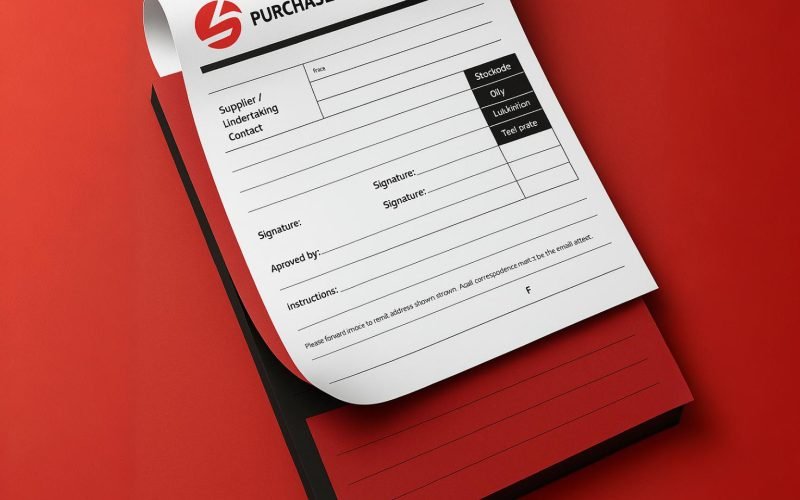“`html
Invoice Design Invoices are an essential part of any business, whether small or large. They are not just tools for documenting financial transactions but also a reflection of the company’s identity and level of professionalism. While invoice design may seem simple at first glance, it actually requires careful planning and a deep understanding of customer needs and local regulations. In this article, we will review the importance of invoice design, the essential elements it should contain, and how to improve the design to ensure operational efficiency and customer satisfaction.
The Importance of Professional Invoice Design
- First Impressions:
The invoice is often the first official document a customer receives after completing a purchase. The design of the invoice reflects the company’s professionalism and influences how the customer perceives it. - Ease of Use:
When the invoice is clear and well-organized, it becomes easier for the customer to understand the financial details and required actions, reducing support queries. - Legal Compliance:
Many countries have strict laws regarding the information that must be included on invoices. Properly designing the invoice ensures compliance with these laws. - Building Trust:
A professional invoice enhances customer trust in the company and increases the likelihood of repeat business.
Essential Elements in Invoice Design
1. Header
- Company Name: Should be clear and distinctive.
- Logo: Adds a professional touch and reinforces brand identity.
- Contact Information: Company address, phone number, email, and website.
2. Invoice Details
- Invoice Number: A unique number for each invoice to facilitate tracking.
- Issue Date: The date the invoice was issued.
- Due Date: If there is a payment deadline, it should be clearly stated.
3. Customer Information
- Customer name.
- Customer address.
- Tax identification number (if applicable).
4. Product or Service Details
- Description: A clear description of what was purchased.
- Quantity: Number of units purchased.
- Unit Price: Price per unit.
- Subtotal: Total price calculation for each product.
5. Taxes and Additional Fees
- VAT percentage or any other fees.
- Total amount after adding taxes.
6. Final Total
- Total amount due.
- Currency used (e.g., USD, EUR, etc.).
7. Payment Methods
- Available payment options (bank transfer, credit cards, PayPal, etc.).
- Bank account details if necessary.
8. Footer
- Payment terms and conditions.
- Thank-you message to the customer.
- Any additional legal information.
Examples of Invoice Designs Using Tables
Table 1: Simple Invoice Example

Table 2: Comparison Between Two Different Invoice Designs

Tips for Improving Invoice Design
- Use Colors Wisely: Colors can make the invoice more appealing, but avoid overusing them. It’s best to stick to two or three colors.
- Clear Fonts: Use clear and easy-to-read fonts like Arial or Calibri. Avoid complex fonts that may cause readability issues.
- Organized Layout: Divide the invoice into clear sections using tables or appropriate spacing.
- Adapt to Customers: If you work with international clients, ensure the invoice is provided in their local currency and language.
- Digitization: Provide a digital copy of the invoice via email or electronic payment platforms.
- Test Before Sending: Double-check all details before sending the invoice to ensure there are no errors.
Tools for Easy Invoice Design
There are many digital tools that can help you design invoices easily and professionally:
- Accounting Software: Programs like QuickBooks and Zoho Invoice offer customizable templates.
- Microsoft Excel: You can create invoices using spreadsheets.
- Free Online Tools: Websites like Invoice Generator and Wave provide free and easy-to-use templates.
Conclusion
Designing invoices is not just a routine process; it’s an opportunity to reinforce your brand identity and build long-term relationships with customers. By focusing on essential elements such as clarity, organization, and legal compliance, you can create professional invoices that reflect your company’s level of professionalism. Additionally, using digital tools and innovating in design can make this process more efficient and suitable for modern market needs.
Always remember that an invoice is not just a financial document; it’s a representation of your company. Therefore, invest time and effort into designing invoices that reflect the value of your business and contribute to its future success.
 العربية
العربية
